Auto Anthro: Why racing fans can’t stand some racing movies
Jack Swansey holds a degree in anthropology with a focus on car culture, and he is the world’s leading ethnographic authority (by default, if you must know) on NASCAR fandom. His love of the automobile fuels him to discover what cars mean to the people who own, drive, and love them. Read more Auto Anthro here. —EW
Racing movies are a Hollywood fixture, an action and drama genre to which cinematic storytellers regularly return. You might have noticed, however, that these films tend to be polarizing; mainstream audiences and real-life racing fans rarely agree on what makes a good racing movie or a bad one. I’ve met true gearheads who will defend Days of Thunder, Cannonball Run, or Sylvester Stallone’s Driven to their dying breaths, despite filmmaking gaffes or cheesy dialogue. And for every Ford v Ferrari that earns broad critical acclaim and undeniable box-office success, there’s a chorus of car enthusiasts eager to pick apart its every technical and historical inaccuracy.

The recent Gran Turismo summer blockbuster produced such a familiar dynamic. Despite $117M in box-office sales (against a $60M budget), car-savvy critics contend that it plays fast and loose (“on the edge of out of control,” some might say) with the order of events in the real-life racing career of Jann Mardenborough.
To understand from what or where these different perspectives stem, it helps to break down the medium of film into the most common narrative building blocks. There is a series of story beats that tend to occur in good movies—I often see screenwriter Christopher Vogler’s 12-step “Hero’s Journey”—but the most basic version is the famous “three-act structure.”
In the three-act form, the first act establishes the world in which the hero’s journey takes place. This act also defines what the journey is going to be about. In the beginning of Gran Turismo, Jann Mardenborough (Archie Madekwe) has a loving father who nevertheless disapproves of his son’s only ambition: to race cars. Success in this field seems impossible, since Jann’s only competitive experience behind the wheel is in the virtual world of PlayStation’s Gran Turismo. His eventual invitation to Nissan’s GT Academy, which gives gamers the chance to train as real-life racing drivers, serves as what Vogler would label the “call to adventure.” That opportunity is what sets the story in motion. Through it Jann meets a mentor figure, Jack Salter, (David Harbor) to help him improve his skills. Jann ultimately signs a contract with Nissan—“crossing the threshold” as Vogler would put it—into the world of professional racing.
Act two, usually the longest act in a good film, shows Mardenborough exploring and adjusting to his new environment in motorsports. He experiences success in some races and failure in others, eventually arriving at his lowest emotional point. In the case of the Gran Turismo movie, this nadir is his real-life accident in the Flugplatz section of the Nürburgring, in a VLN endurance race that claimed the life of a spectator. In reality, this crash happened in 2015, two years after the events that inspired the third act of Gran Turismo, in which the hero finds the power deep inside himself (“resurrection,” to Vogler) and emerges changed, if not triumphant.
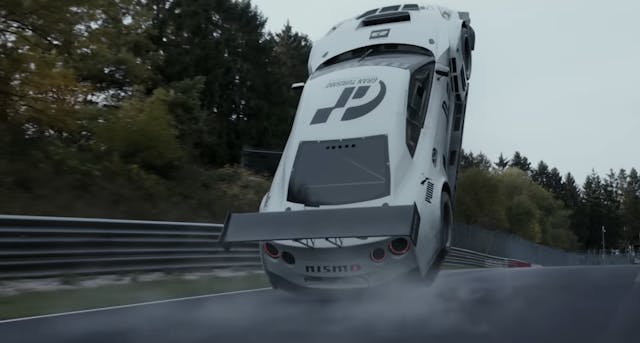
According to Ben Queen, the screenwriter of Pixar’s Cars 2 and Cars 3, basic facts about racing make it tailor-made for a great film narrative: “built-in protagonists and antagonists—the other characters racing against our guy —the team element, the authenticity of the world.” You can check off all Vogler’s boxes here: the mentor, the threshold, et cetera—but it goes deeper than that. Because of humanity’s instinctive love of a good story, racing is a narrative medium in real life.

Vogler’s “Hero’s Journey” is directly based on the work of Joseph Campbell, the scholar widely credited with identifying the “monomyth” that bridges Hollywood scripts and Homeric poetry. (There are narrative structures other than Hollywood’s three acts: Shakespeare plays are told in five, for instance, and Game of Thrones’ many twists and turns resist easy categorization.) Campbell argues that humanity, throughout history, has always mythologized stories about heroes, be they real or fictional.
NASCAR, for instance, has stood the test of time because of the story arcs of its driver-heroes. The 1992 Hooters 500 at Atlanta Motor Speedway witnessed six drivers enter with a shot at the Winston Cup championship, but it soon came down to two: Bill Elliott, NASCAR’s most popular driver who drove for Junior Johnson’s Budweiser-funded powerhouse operation, and Alan Kulwicki, a Wisconsinite outsider who built his own engines. While battling Elliott for the win, Kulwicki’s Ford Underbird (he had special permission from Ford to run without the Th-) broke the first three gears in its transmission, seemingly dooming Kulwicki’s championship charge. A brilliant strategy call to delay pitting and lead the pack for one lap more than Elliott earned Kulwicki just enough bonus points to win the title, though he lost the race.
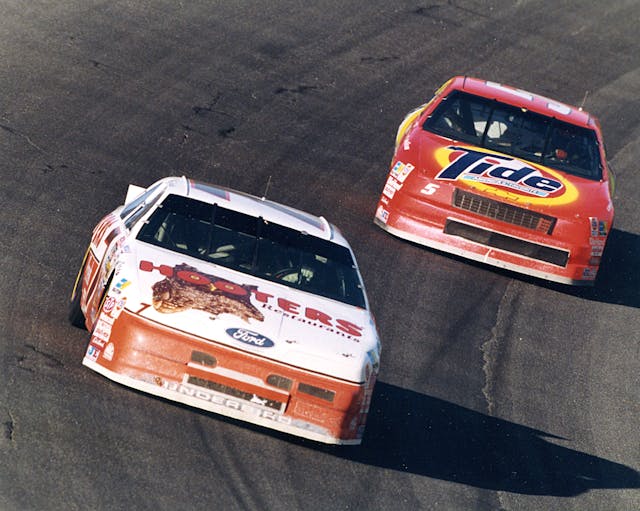
It’s the monomyth, a perfect hero’s journey (unless you’re an Elliott fan). But this wasn’t a movie, which means the real-world race lasted three hours, 44 minutes, and 20 seconds. Fans had been watching Kulwicki’s entire career point to that moment; at the same time, Richard Petty was making his final Cup start in that race and Jeff Gordon was making his first. That race, considered by many NASCAR’s greatest, takes on its emotional meaning only in the context of the rest of the sport’s history. A feature film doesn’t have the time to establish that depth of context. As Queen warned me: “Even if the cars are moving forward, the story might not be.”
Racing’s narrative structure, so familiar to fans of the sport, is near-impossible to drop directly to the silver screen. Just like a novel or a TV show, it has to be adapted. And adaptations always make changes to the source material. They have to, in order to make it work in a new medium, but those changes can be frustrating to those in the know. Anyone expecting the film adaptation to be just like the book is almost inevitably disappointed. It can’t be exactly like the book because it’s a movie, which means a movie about racing will never be just like watching a race.
If done well, adaptation adds something only the new medium can provide.
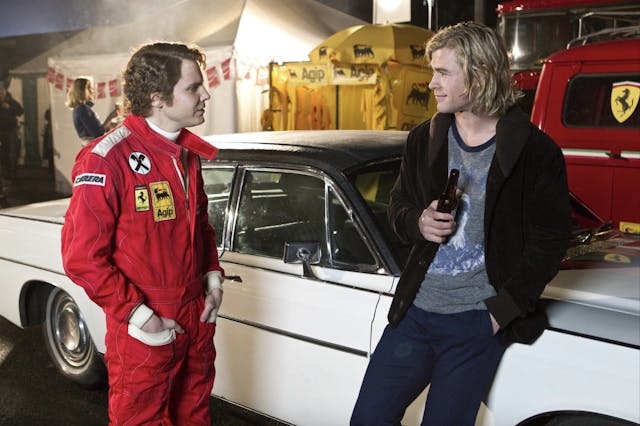
Let’s take a look at 2013’s Rush. The film tells the story of James Hunt and Niki Lauda’s rivalry leading up to the 1976 Formula 1 championship. It ends with a quiet scene in an airplane hangar, with Hunt (Chris Hemsworth) and Lauda (Daniel Brühl) reconnecting weeks after the season is complete. It’s only the two drivers on location—no media, no fans, no cars even—and they just talk. They argue about the rainy conditions at the Japanese Grand Prix, when Lauda decided the conditions were too dangerous to drive; Hunt continued on to win the title. They argue about their different approaches to racing, yes, but it’s from the audience’s perspective in that narrative moment that we understand something more: They’re really arguing about life.
Lauda then delivers a monologue in voice-over, during which the film intercuts archival footage of the real Hunt and Lauda, with Brühl watching Hemsworth walk away. “People always think of us as rivals,” Brühl’s Lauda says, “but he was among the very few I liked … and even fewer that I respected. He remains the only person I envied.”
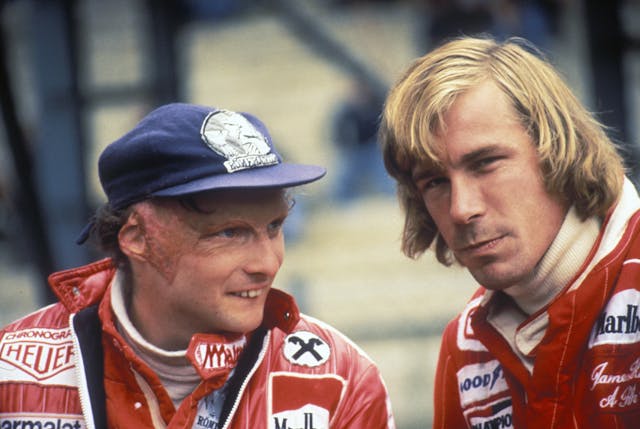
You can read books and articles about the 1976 Formula 1 season and the lives of Hunt and Lauda. Maybe you were lucky enough to have watched them race in real time. Their rivalry and friendship is rich with subtext, two very different men with very different philosophies that came into peak conflict that day at Fuji Speedway. Rush, the film, is about delivering the essence of that tension, whether or not the audience has a particular affinity or background in racing. It’s that rare film that succeeds in pleasing both casual viewers and serious racing fans.
With Ferrari coming out on Christmas Day this year, Michael Mann has his work cut out to thread that same needle. We car people are a tough crowd, but the movies that get it right we remember forever.
***
Check out the Hagerty Media homepage so you don’t miss a single story, or better yet, bookmark it. To get our best stories delivered right to your inbox, subscribe to our newsletters.
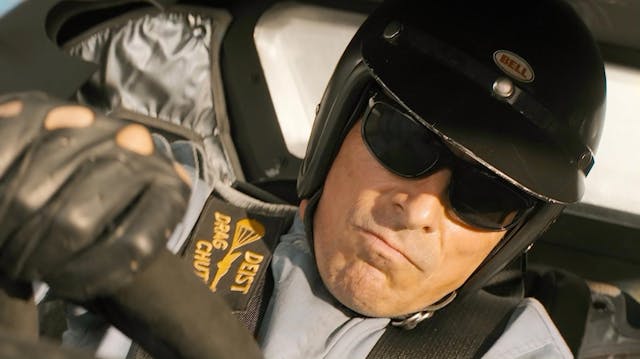


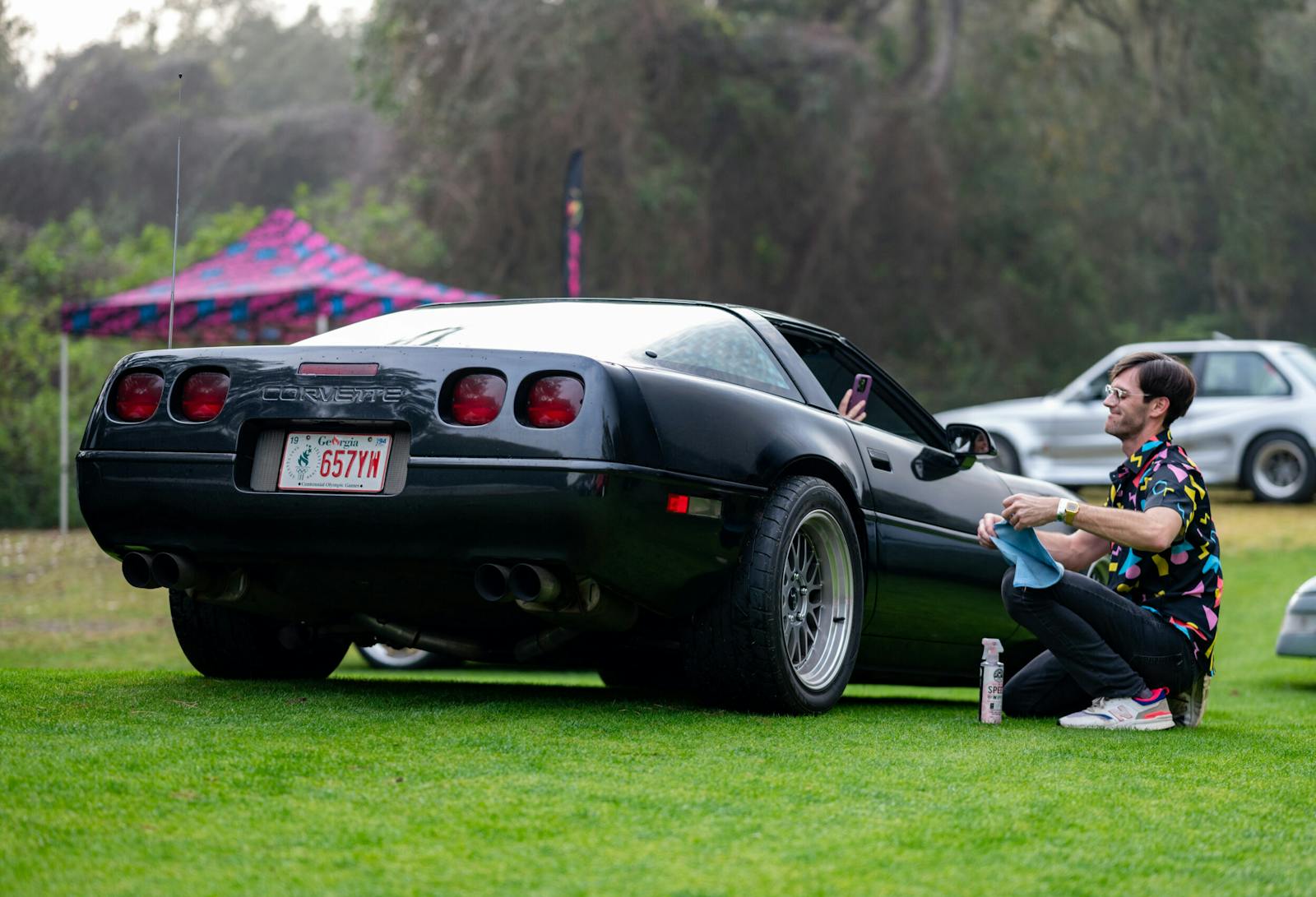

Just rewatched Grand Prix. The movie wears well. The drivers of that era were studs….
Agree 100%. Grand Prix was filmed in season, and the real drivers are the stars…it’s melancholy seeing guys like Jochen Rindt, and so many others who didn’t survive that film by under three years. Thank God for Scott Stoddard…sorry, Jackie Stewart.
I really liked Rush – now I know why!
Movies based on real events and real things have a bit of obligation to tell the true story.
In many cases the true story is good enough for a movie but too often they feel they have to embellish scenes and actions that never could have happened.
It is not just racing but movies like Top Gun embellish to the point of court martial.
Like Days of Thunder. The movie did take a number of true events and moved them to the ridicules. Cars sparking on every pass and explosions that just never would happen.
The movie was based on Tim Richmond and to be honest they should have just used what he actually did as he was a star of his own till his life style caught up.
The best NASCAR movie made was Stroker Ace. Yes it was a comedy but much of what was in the race is the kind of crap that really goes on. Sponsor issues and bad owners crazy drivers etc. it was closer to the truth of that era.
Lemans got the camera thing right but not much story.
Grand Prix was the best bar none. The action and camera work was great. The actors really drove, it was at the race tracks race weekends. It captured how it was. The story was better than most. They just got it right.
Even Enzo saw what they did and authorized his cars to participate and the use of the Ferrari engine sound in the movie. I don’t know a better endorsement.
Rush did their best and made a decent movie. Ford vs Ferrari while not perfect was better than many.
Most other are just bad movies.
But to be fair it is easy to make a movie like StarWars and Guardians as they have no reality based stories. You can blow up everything and never over do the special effects.
As for the Fast and Furious we at work really hated it. We even sold many parts to the movie but it was just so unrealistic and created an image of what did not exist in the street racers. Then it evolved into something not even like real life at all.
A while back we did a deep dive into racing movies: https://www.hagerty.com/media/automotive-history/the-best-and-worst-vintage-racing-movies-of-the-20th-century/
These are movies…not documentaries. Period.
Great point. 👍
No but often the truth is much better than the movie.
Grand Prix just got it all right. all racing movies pale compared to it. Nearly every scene had happened or was going to happen in the near future. Bandini was asked where it was most likely to crash at Monte Carlo. He said coming out of the tunnel at the kink. They staged a crash that was very realistic and nearly match what killed Bandini a year later.
Movies like Days of Thunder suffered from too much special effects, Iffy acting and poor writing. While it may fool many those of us who actually know what it is really like just laugh at how silly it can be.
Rush and Ford vs Ferrari were enough to give us hope Hollywood was learning to bring better writing and tone done the explosion’s.
I hope they do a fair job on Enzo. He was a very complex man and the last thing we need to do is change how or what he really was. He was human and driven. he could be soft in some ways but very hard in others. They need to leave that alone. Winning dominated anything else to him.
Agree on Grand Prix, and LeMans is to me its equal, if not better in capturing the racing action. Most “racing” movies just have too much sawing at the wheel, exaggerated control inputs, a ridiculous amount of gear changes, and the like; plus the seemingly obligatory love interests and erroneous personal portrayals. If one actually knows motorsports, the actual events and stories are more than enough on their own. But Hollywood doesn’t believe the truth will sell tickets.
A commonality between Rush and Le Mans seems to me to be the relationship between supposed rivals. The media liked to build up a heated rivalry between Lauda and Hunt, and in the film Le Mans, the press made Delaney and Stahler out to be hated rivals, when they were friends with mutual respect for each other. One of my favorite scenes is at the end, when the two of them look at the winning drivers on the podium. Then they look at each other as if to say, “we just finished the race of our lives, just the 2 of us, and standing on the podium isn’t necessary for us to know that.”
“Seemingly obligatory love interests”? You mean those aren’t real? To take that further, you mean that being a famous race car driver won’t get me the girl? Man, you sure know how to shatter a dream, Steve – ya know that? 🙄
My all time favorite is the movie Winning with Paul Newman about the Indy 500. The sights and sounds from the 500 grounds are very nostalgic and the storyline and characters were compelling. I like to watch that movie each year in the lead up to the month of May activities.
Quite a few racing movies cited here, but I can’t believe you’ve all left out the all-time best one: Viva Las Vegas! Realistic characters, believable driving, great acting, rival drivers behaving as friends, good singing, Ann-Margret AND a houseboat. Doesn’t get any better, I tell you! [There, that oughta stir up some slap-me-down commenting if anything will 😋]
Far too many of these movies are a watch once type of deal. Few cross into my watch 2 or more times list.
My pet peeve in almost every racing movie is the driver suddenly flooding it, and shifting into a higher gear as he closes in on his rival. You were just moseying down the track before? Didn’t need to floor it, or even go into high gear?
Redline 7000 was my favorite. Except for the limited amount of racing footage available (Used the same crash footage more than once), it was a good movie back in the 60’s.
Omigosh, it’s “The Driver with A Thousand Faces.”
I met Jos. Campbell once. Have to admit, I did not like him.
Due diligence, I had to skip a race to be there, so there is that.
Frankenheimer set the standard for shooting realistic racing action with Grand Prix. It wasn’t the first racing movie to use a camera car or truck but I’m pretty sure it was the first to use actual race cars (specially prepped Ford GT40s I believe) as camera cars.
I appreciate that there are many liberties taken with the stories in a number of these films and I would doubt that many people would be viewing them for historical accuracy, but they do make for great entertainment (some of them, some are just silly, like Fast & the Furious part 600, ridiculous street racing I know) but I appreciate when the decent and historical films get made as so few movies are actually made surrounding these events.
And speaking of accuracy, your photo above captioned “Alan Kulwicki battling with eventual race winner Bill Elliott” is completely inaccurate. The #5 Tide Chevrolet shown is Ricky Rudd, Bill would have been in the #11 Budweiser Ford.
Good catch! I thought somethgin didn’t look quit right, but I didn’t spend enough time looking at the pic.
Thanks for pointing out the caption of the Kulwicki/Rudd photo. We have updated the caption to reflect the correct names.
The top three in order:
Le Mans
Rush
Grand Prix
The bottom three:
Driven
Days of Thunder
Ford vs. Ferrari